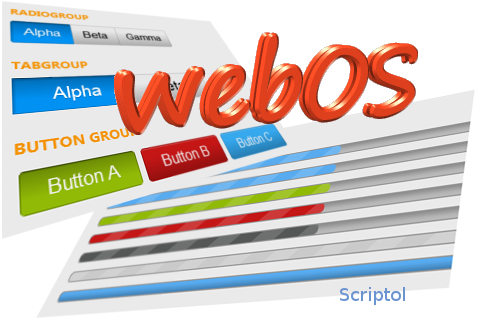WebOS for small computers
WebOS has often been considered the best OS for a smartphone and is returning to the Raspberry Pi.
The company that created it, Palm, was taken over by HP and it was expected that webOS would have a great future, as HP claimed that the OS was the main reason for the buyout. In addition, it wanted to use it also on netbooks and tablets and since 2012 install it as an alternative system on every computer (it sells 60 million per year).

But on August 19, 2011, HP announced the discontinuation of webOS on its smartphones and tablets. Then on December 9, 2011, the system becomes open, which revives its interest, but to justify the development it is necessary that several designers use it.
However, on August 31, 2012, the first open source beta is available for download. A list of compatible devices is available on the website if you want to provide them on your mobile that you already have a more modern system. Developers will also be able to view this list for a useful device for testing webOS applications.
In December 2012, its own hardware interface was replaced by Apache's Codova, which allows webOS to work on any mobile device or application.
On February 25, 2013, it was announced that LG was acquiring webOS, its domains and related patents. LG expects to use it on TVs, which obviously makes it less attractive to developers, but in 2018, a mature open source version became available for lightweight devices like the Raspberry Pi.
Development
The development environment, OpenEmbedded, is included, which provides cross-compilation and, therefore, the creation of a mobile application for various processors, and the development tool allows you to implement them on a desktop computer. This includes an emulator.
WebOS includes node.js and therefore a fully portable app, running even on the desktop when it is not accessing mobile phone sensors. But if you have a desktop computer with a touch screen, it makes it easier to test the application.
Node.js allows you to run completely different design applications with HTML interface 5 and work in interaction with the server and, therefore, with several sources, which facilitates mashup. Node modules can be written in their native language and are usually ported to each main OS, which brings webOS the speed of the Objective C language of iOS applications and the same portability as Java from Android .
Qt is also included in the platform .
Everyone who has already tried the OS says they are surprised by the smoothness of its interface compared to other mobile ones, including iOS and Android. In fact, by hiring engineers who worked on webOS, Google was able to recover many ideas that contribute to the quality of this OS and which are now found in Android 4.
